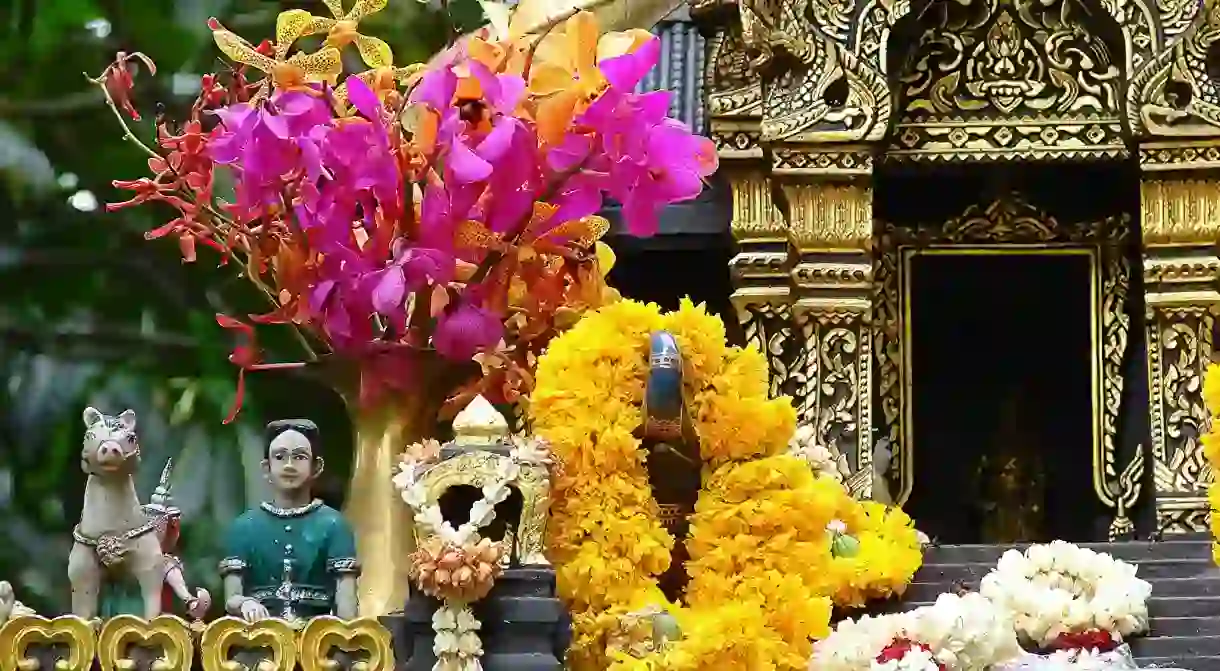How to Set Up a Spirit House in Thailand?

If you’ve been to Thailand, you have seen the spirit houses that sit outside local Thai houses and businesses, but do you know how to set up a spirit house properly? Read our helpful guide to find out exactly how to give the spirits of the land a new home in Thailand.
Did you know – Culture Trip now does bookable, small-group trips? Pick from authentic, immersive Epic Trips, compact and action-packed Mini Trips and sparkling, expansive Sailing Trips.
What is a spirit house?
Spirit houses, or San Phra Phum, ‘house for the spirit of the land’, as they are known in Thai, are commonly seen outside most houses and businesses. It is a dedicated structure to honour the guardians of the land and to protect them from any wayward spirits. Although 95% of the Thai population is Buddhist, Thai people actively engage in daily spirit house rituals, inherited from ancient animistic and folk religions. Thai spirit houses are usually in the form of a miniature house or temple that sits on a pillar, to which residents of the home bring daily offerings of coconuts, fried rice, fruits, flowers and colourful drinks (often inclusive of a straw).
How to prepare for setting up a spirit house
Before you set up a spirit house, you must consult the services of a Brahman priest or Buddhist monk. Not one glove fits all when it comes to finding the correct spirit house; in fact, it is largely dependent on the landlord’s astrological chart to find the perfect match. A Brahman priest or Buddhist monk will also use the owner’s astrology to determine the colour and size of the spirit house and the correct date and time to have the erection ceremony for it. The placement of the spirit house is also extremely important; Thai architects will change their designs to accommodate the auspicious placement of a spirit house on a property. Its location should preferably be in front of a tree, should not be on the left side of a door, and should not face a toilet or a road – these are but a few of the things that need to be taken into consideration when finding the perfect place for a spirit house.
Erecting your spirit house
A spirit house should only be put up with an elaborate and sacred ceremony. Family, friends and neighbours are invited, along with invisibles, including angels, gods, house gods and nagas. At the pre-determined date and time, the ceremony begins with auspicious food being laid out, followed by the land buying ritual to show respect to the Goddess of the Earth; she then reciprocates by clearing away negative energy from the land. The Brahman priest or Buddhist monk will then remove any curses or evil spirits on the land by infusing the hole for the pillar with goodness, which means placing nine lucky leaves, flowers and stakes of lucky Lanna-inscribed wood inside of the hole. Added to the mix is a matrix of geometric figures and nine gemstones that relate to the astrological planets.
After some chanting, the attendees then help erect the spirit house in the correct location. Next, the Brahman priest or Buddhist monk calls on the invisible witnesses and does some more chanting to collectively invoke all the energy into a statue of the Hindu angel Phra Chai Mongkon who is believed to protect homes and businesses. This figure holds a money bag and a sword, and once the spirit world’s energy has been directed into the statue, gold leaf is placed on top of it. It is then the landowner’s responsibility to place the statue inside the spirit house. Ceremony attendees then place flowers and some coloured cloth around the shrine, which is followed by the ‘San Jao Tii’ ceremony to let the land gods know that they will honour them. Finally, the Brahman priest or Buddhist monk does some more chanting, and then they sprinkle holy water on the spirit house. And with this, the ceremony closes, marking that the spirits have a new home.
What you need to know before you remove a spirit house
It’s best not to remove a spirit house; spirits are like tenants in that they do not want to be evicted. Traditionally, landowners leave an old spirit house intact and build another one alongside it. If there is no other option, and the shrine must be removed, a ceremony just as auspicious as the birth of a spirit house must take place. A Brahmin priest or Buddhist monk will decide on the correct date and time to remove the spirit house, which is then transported to a blessed spirit house graveyard. The above steps are extremely important as the belief is that if the spirit house does not rest in peace, the landowner is at risk of a lifetime of bad luck.













